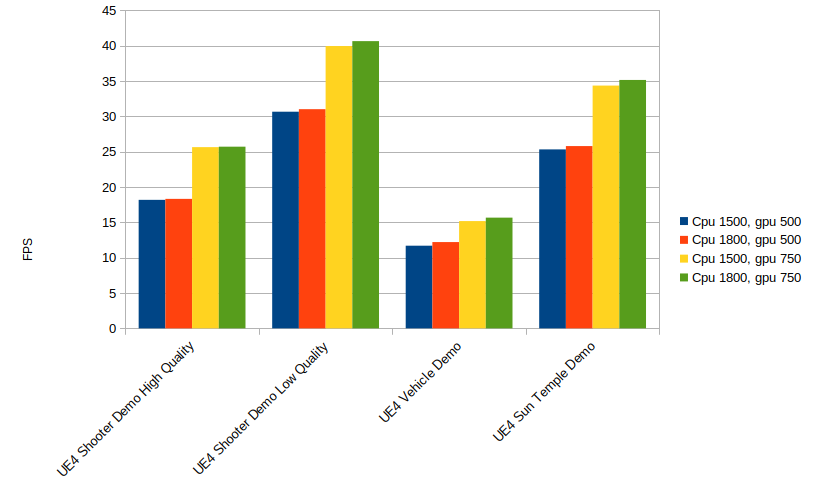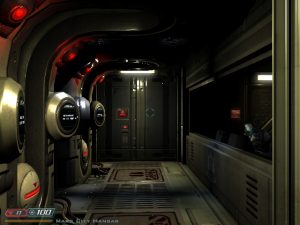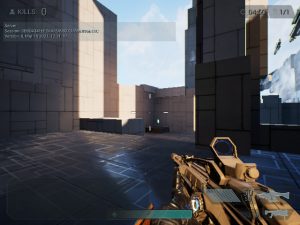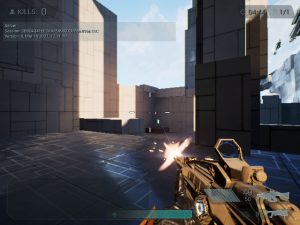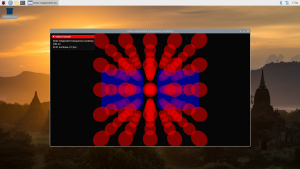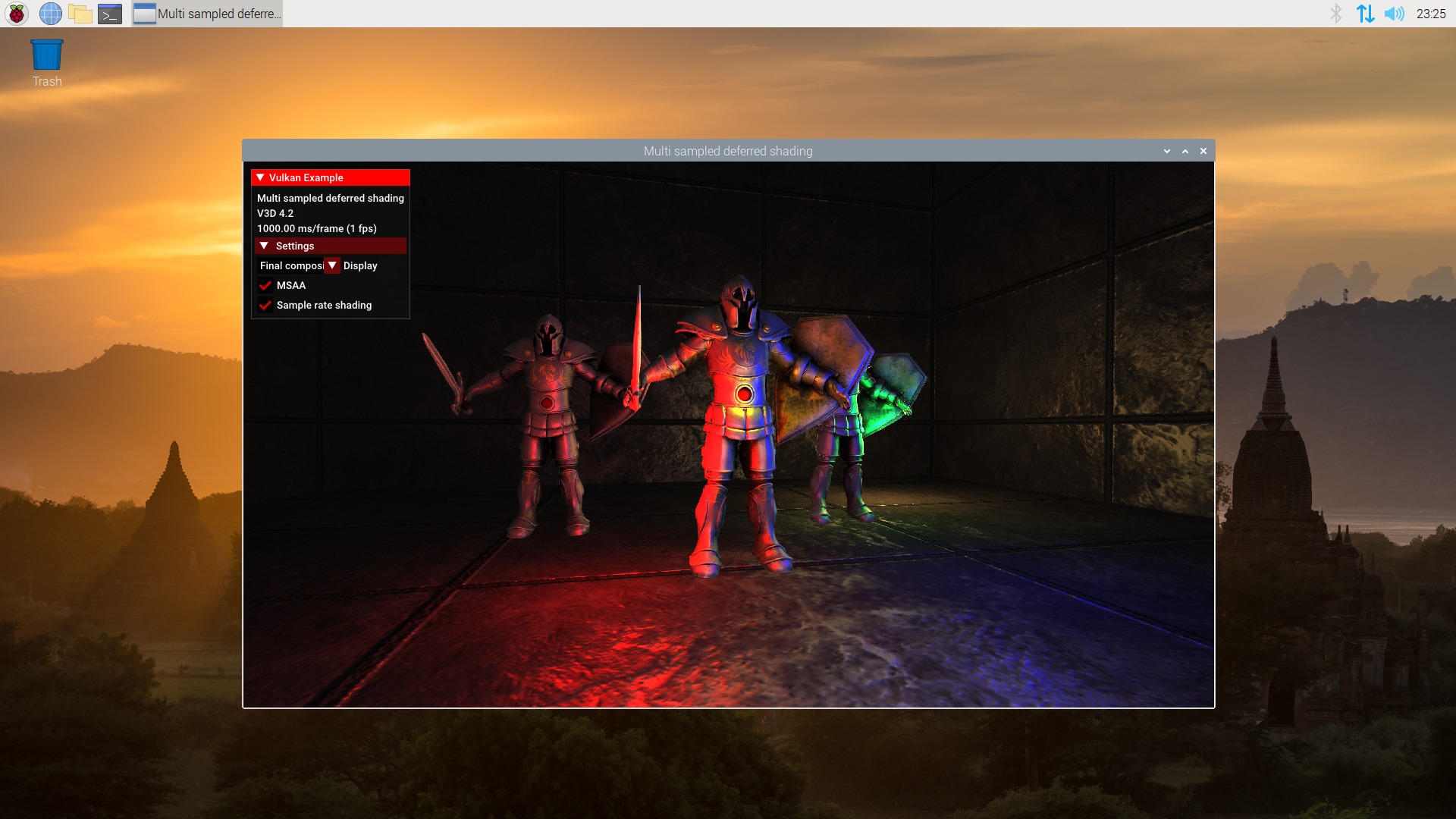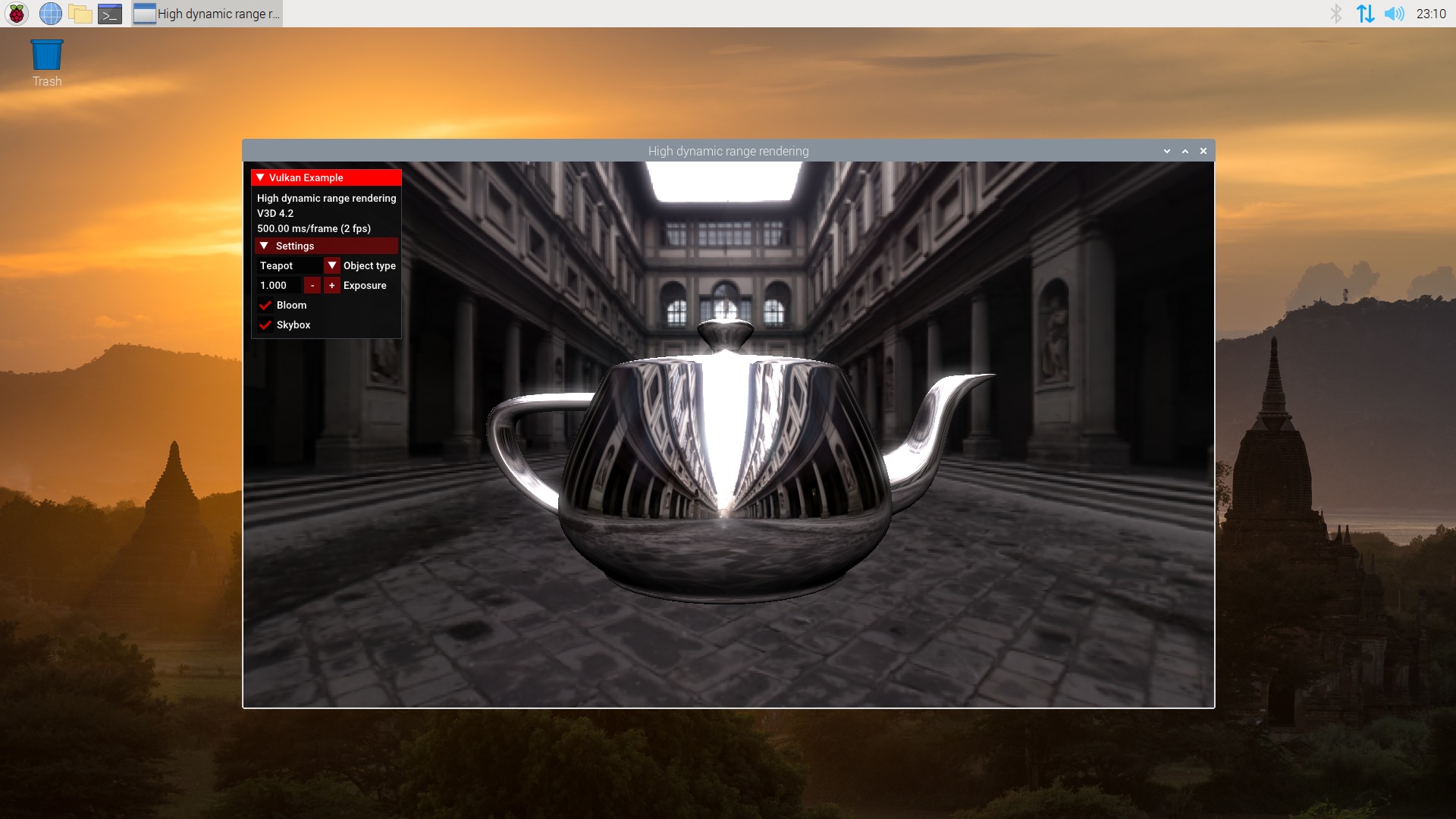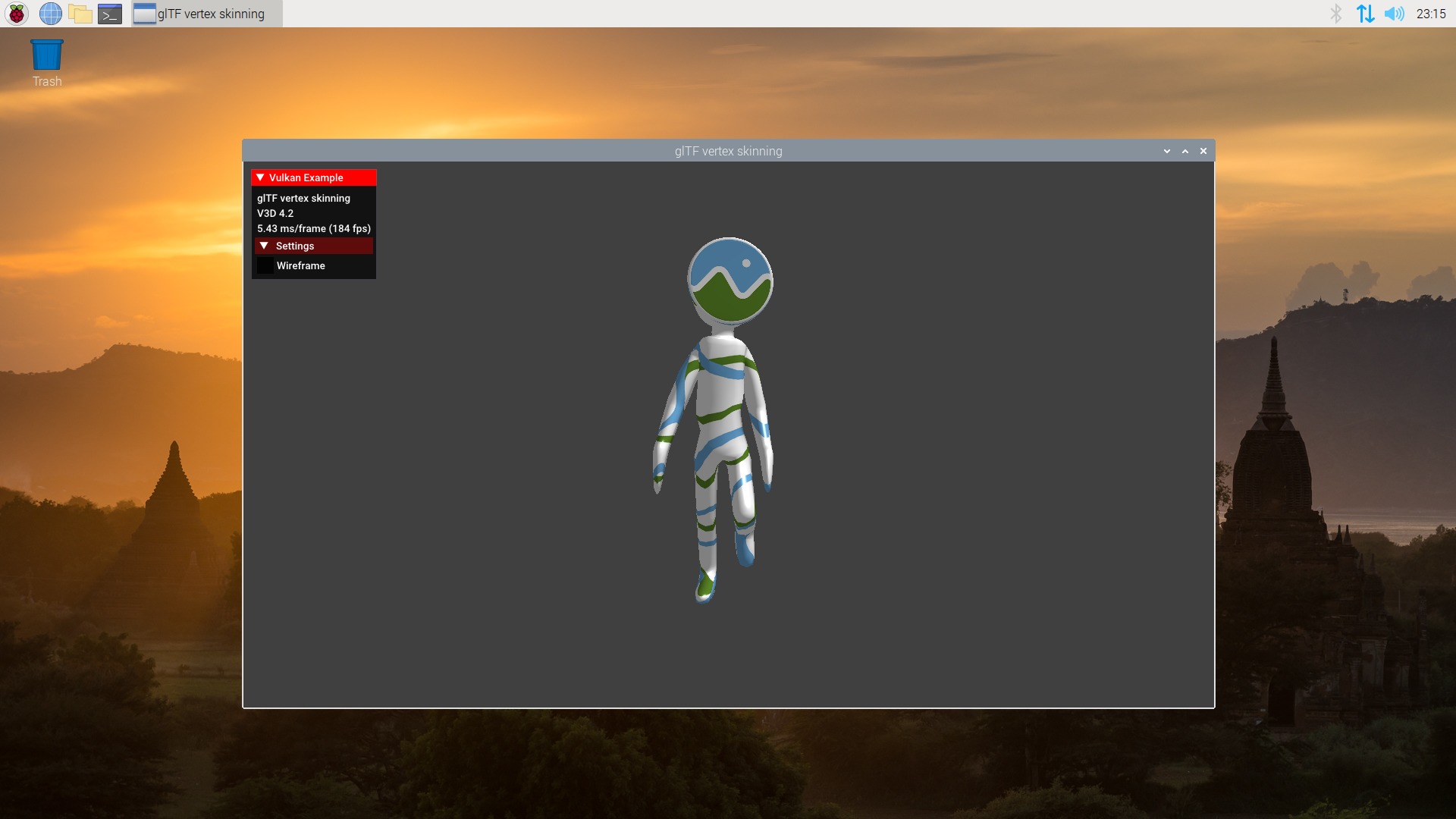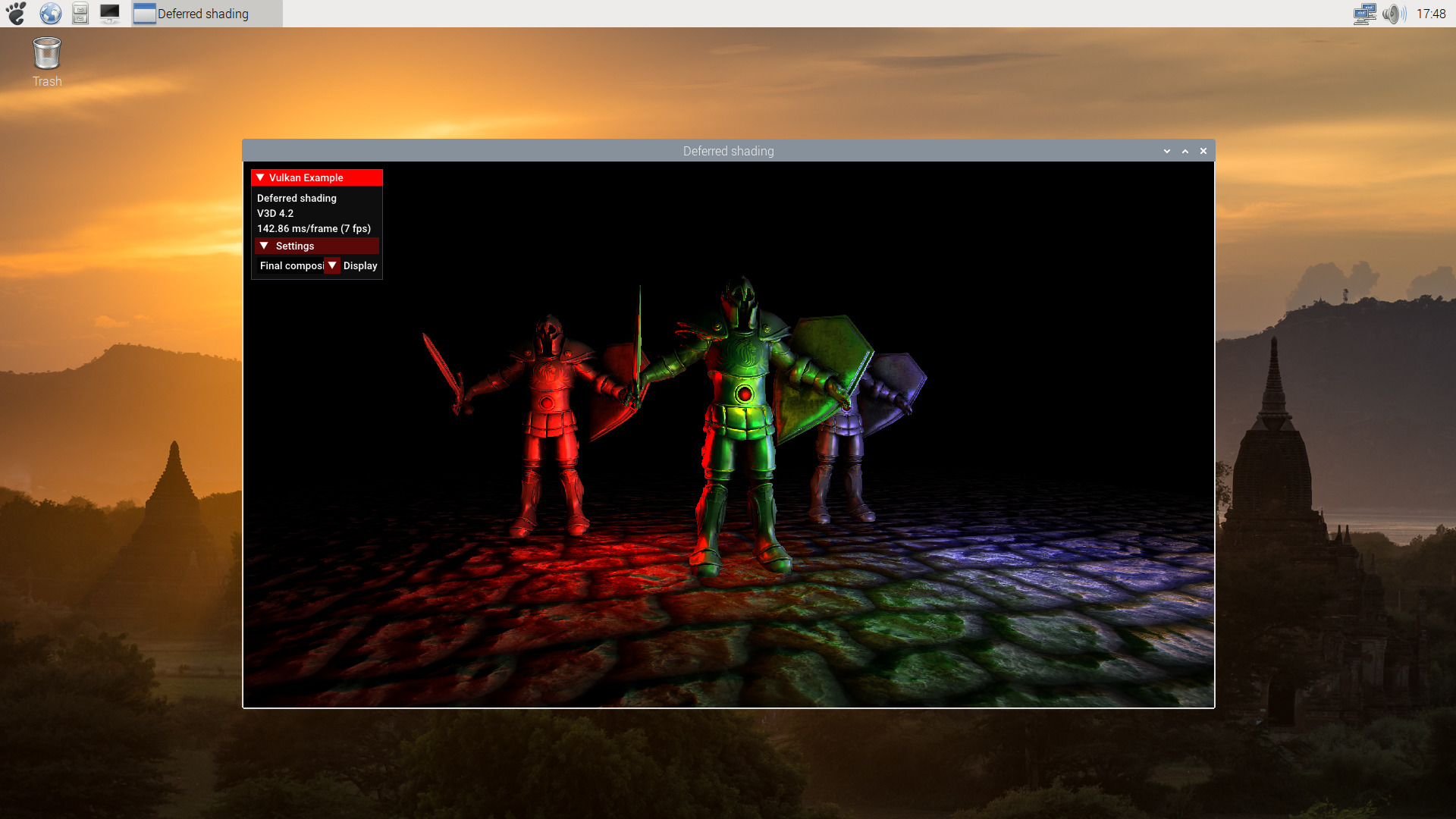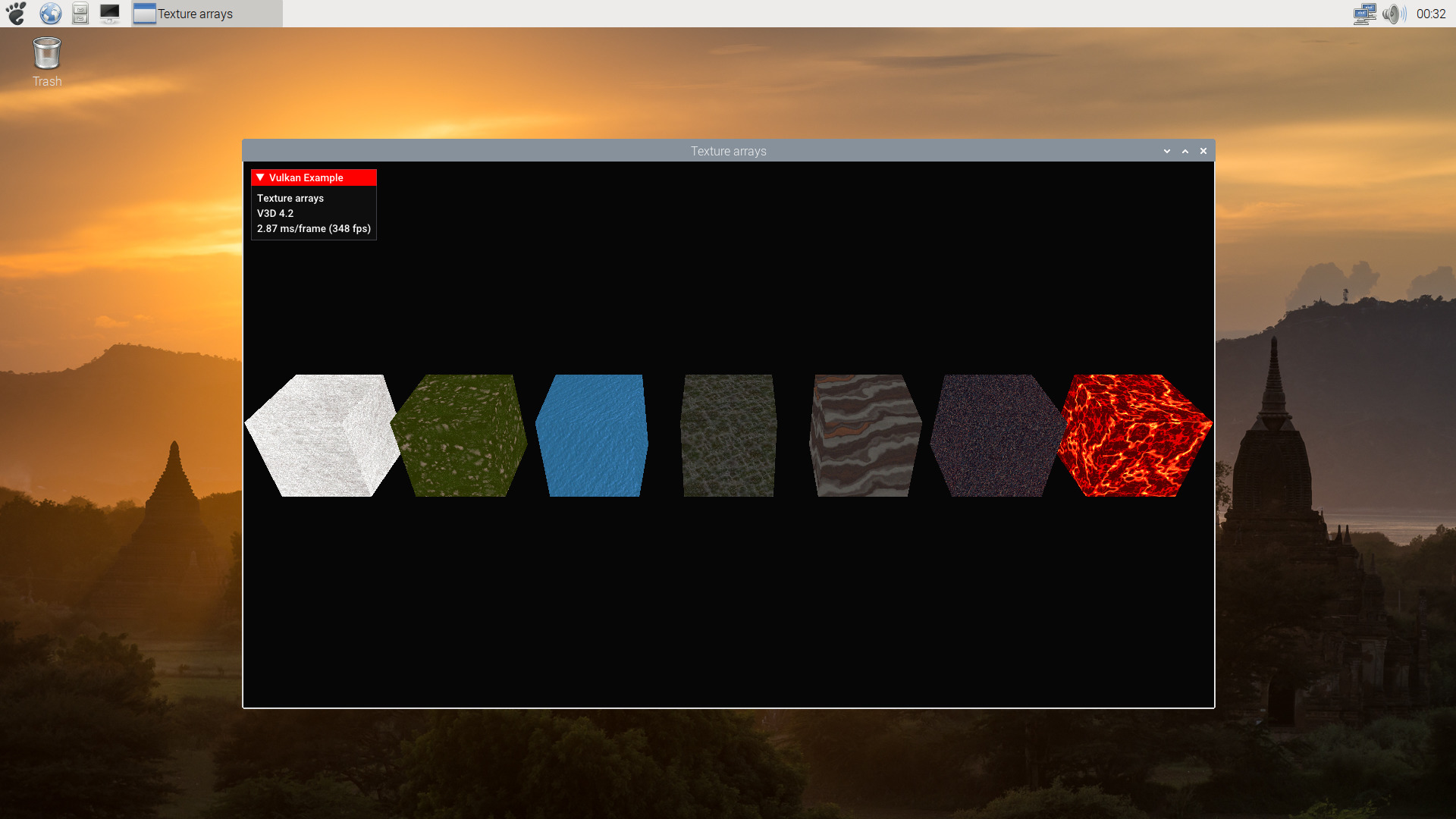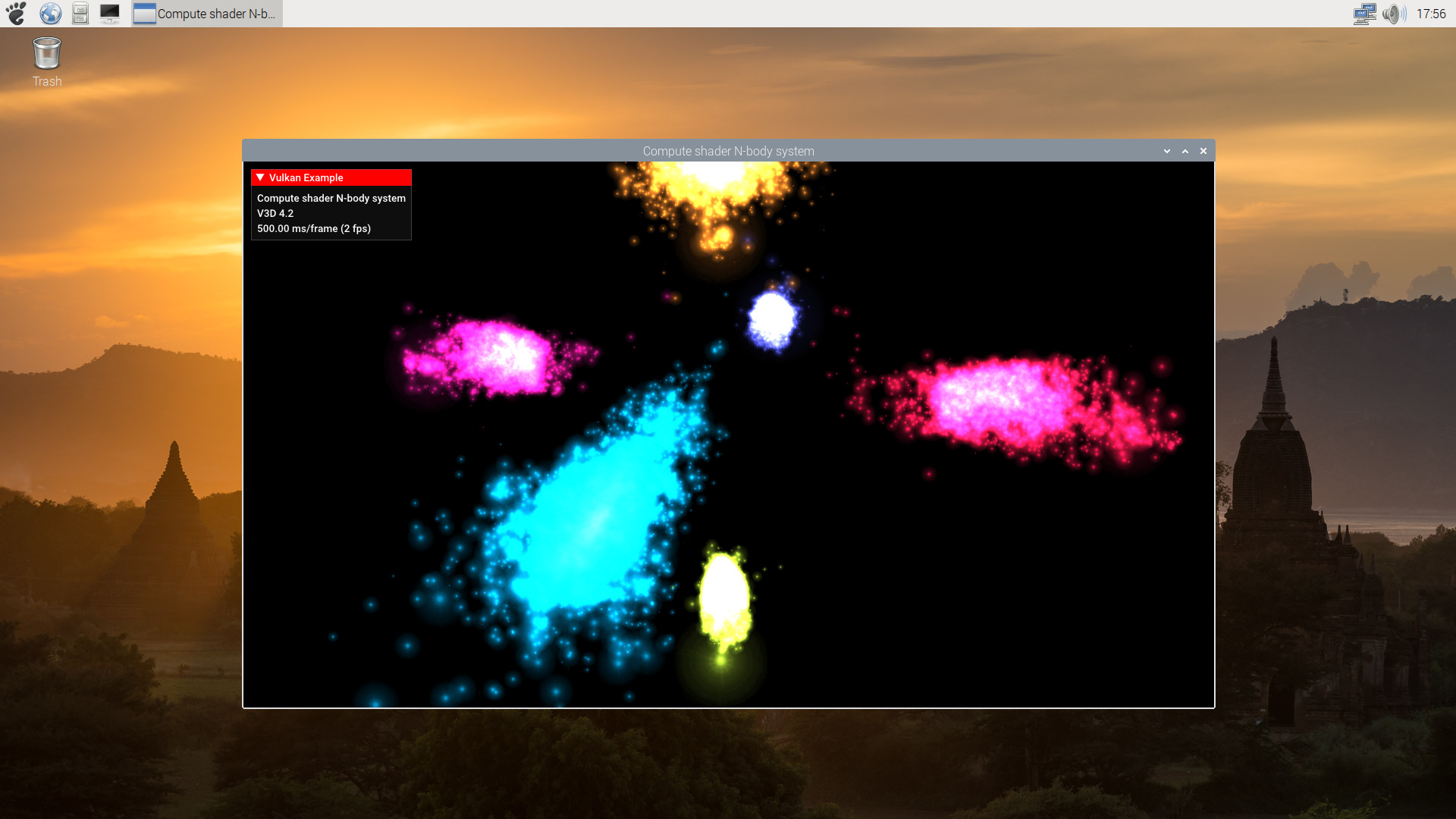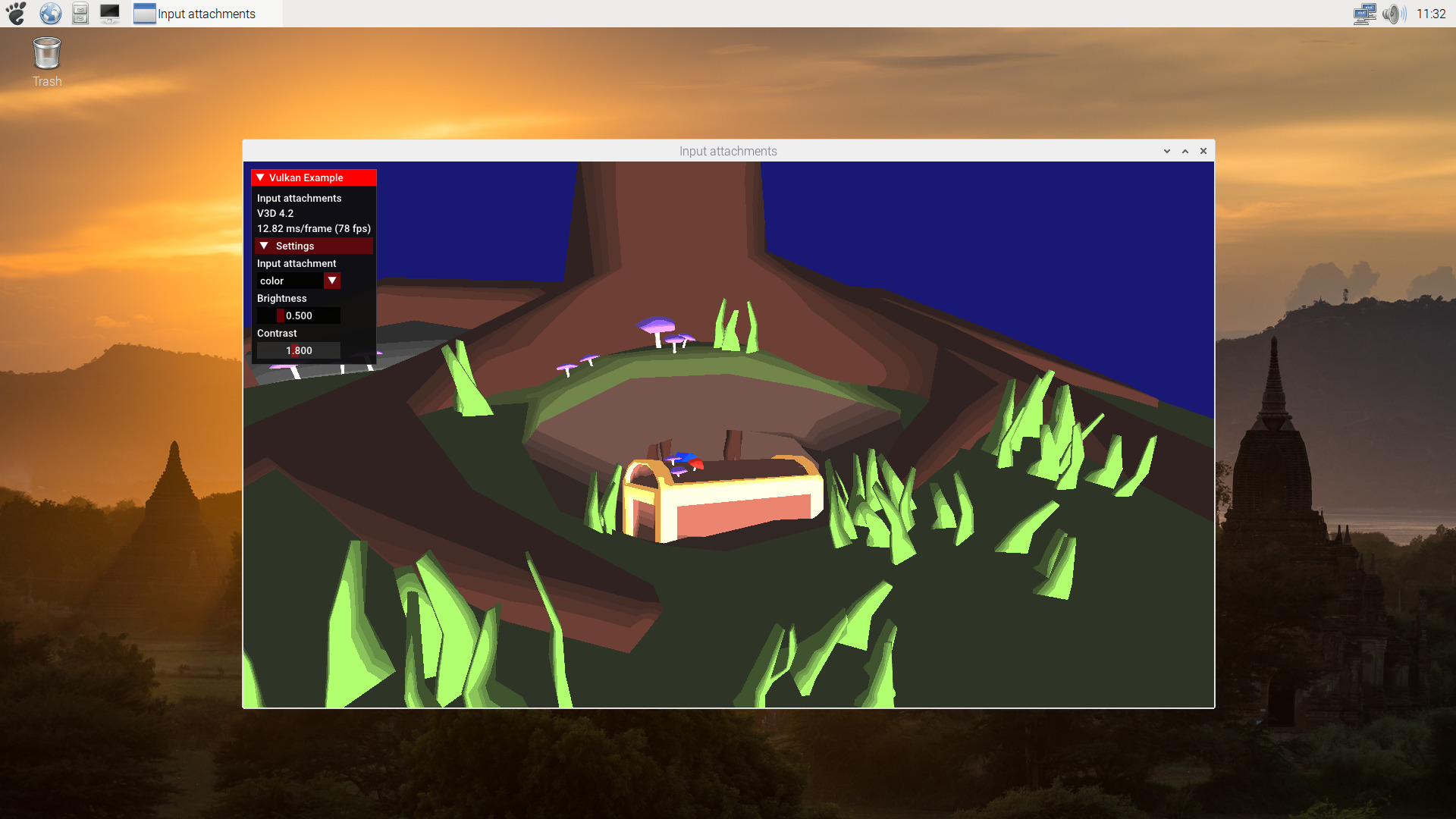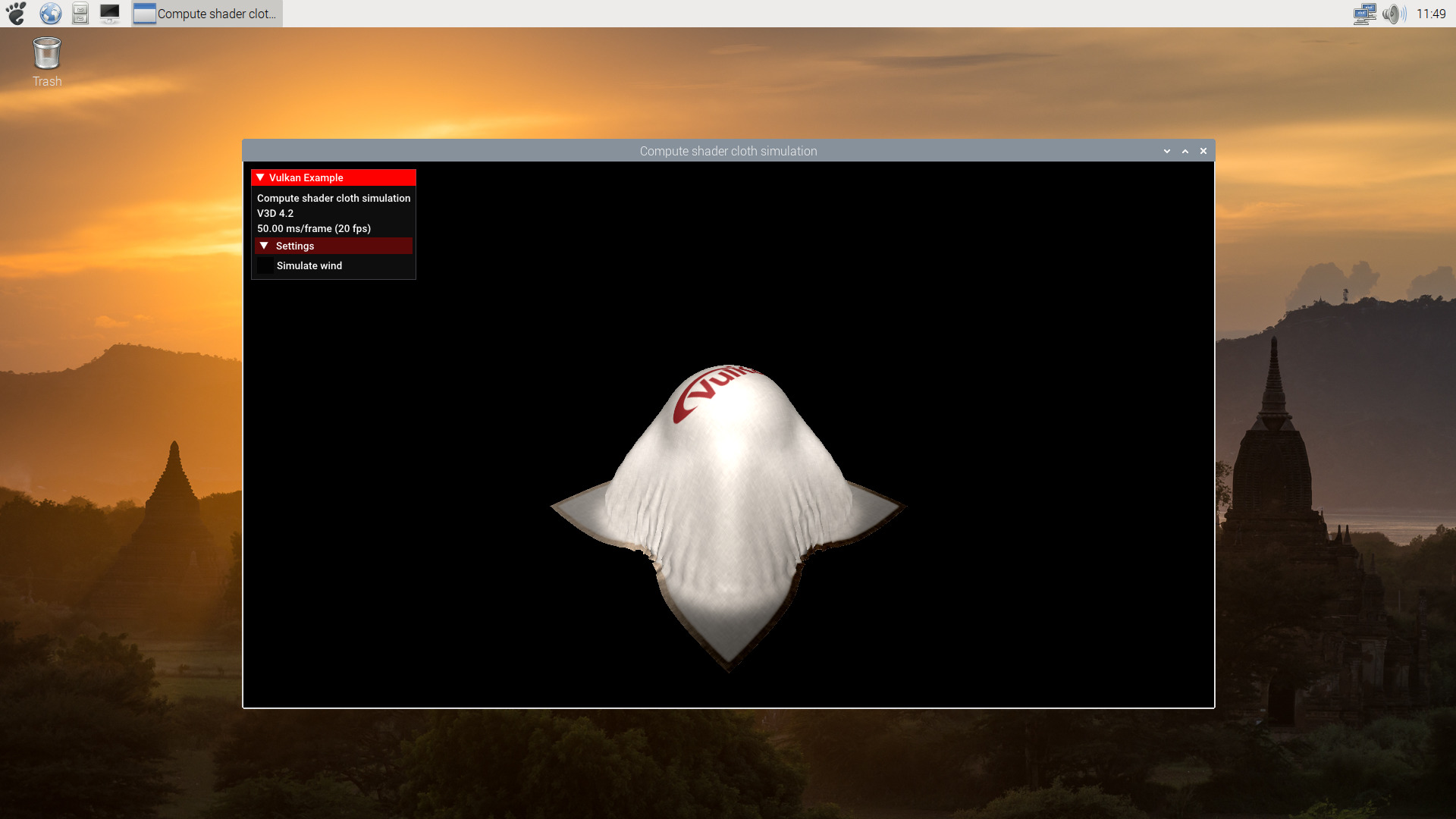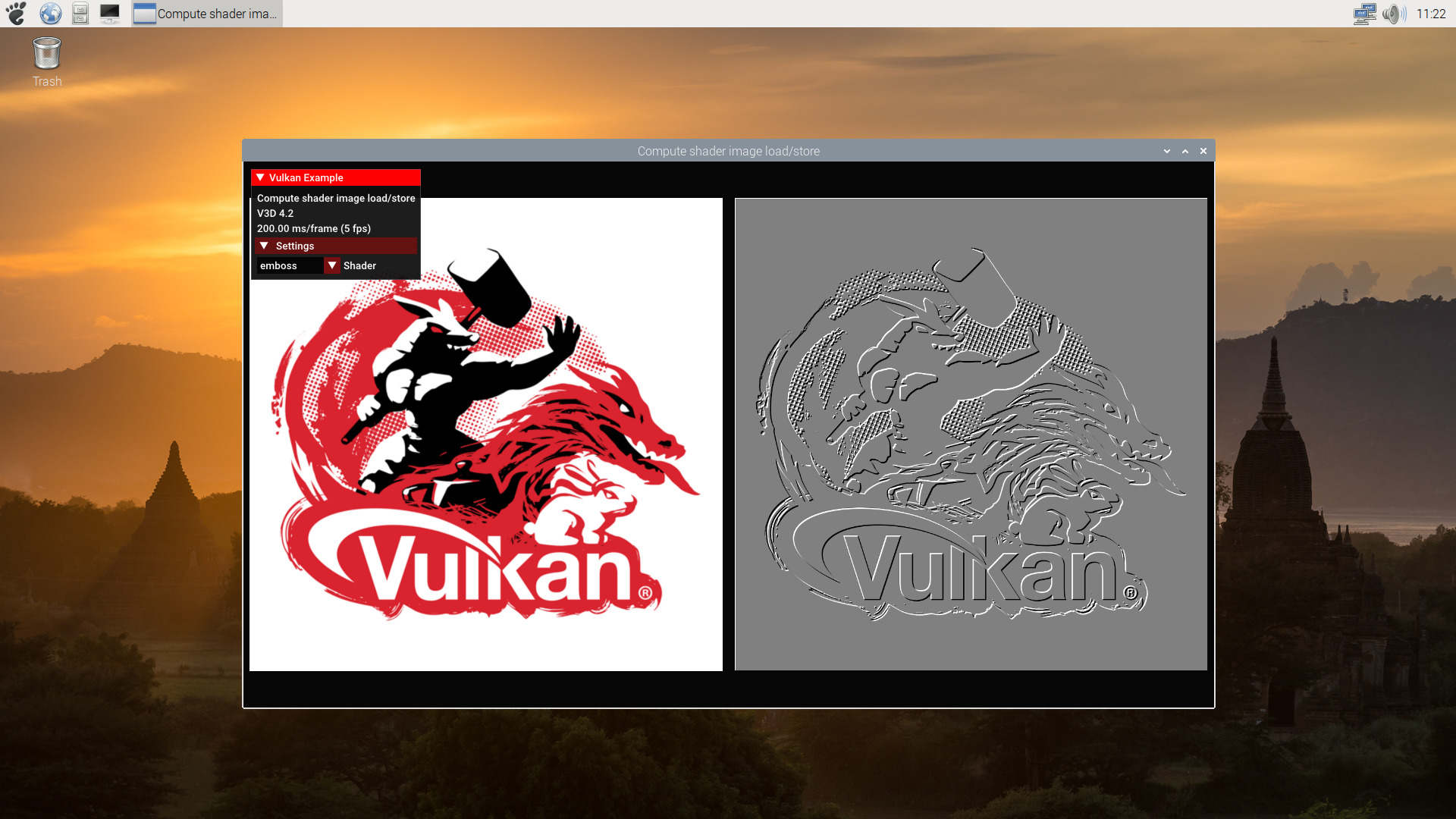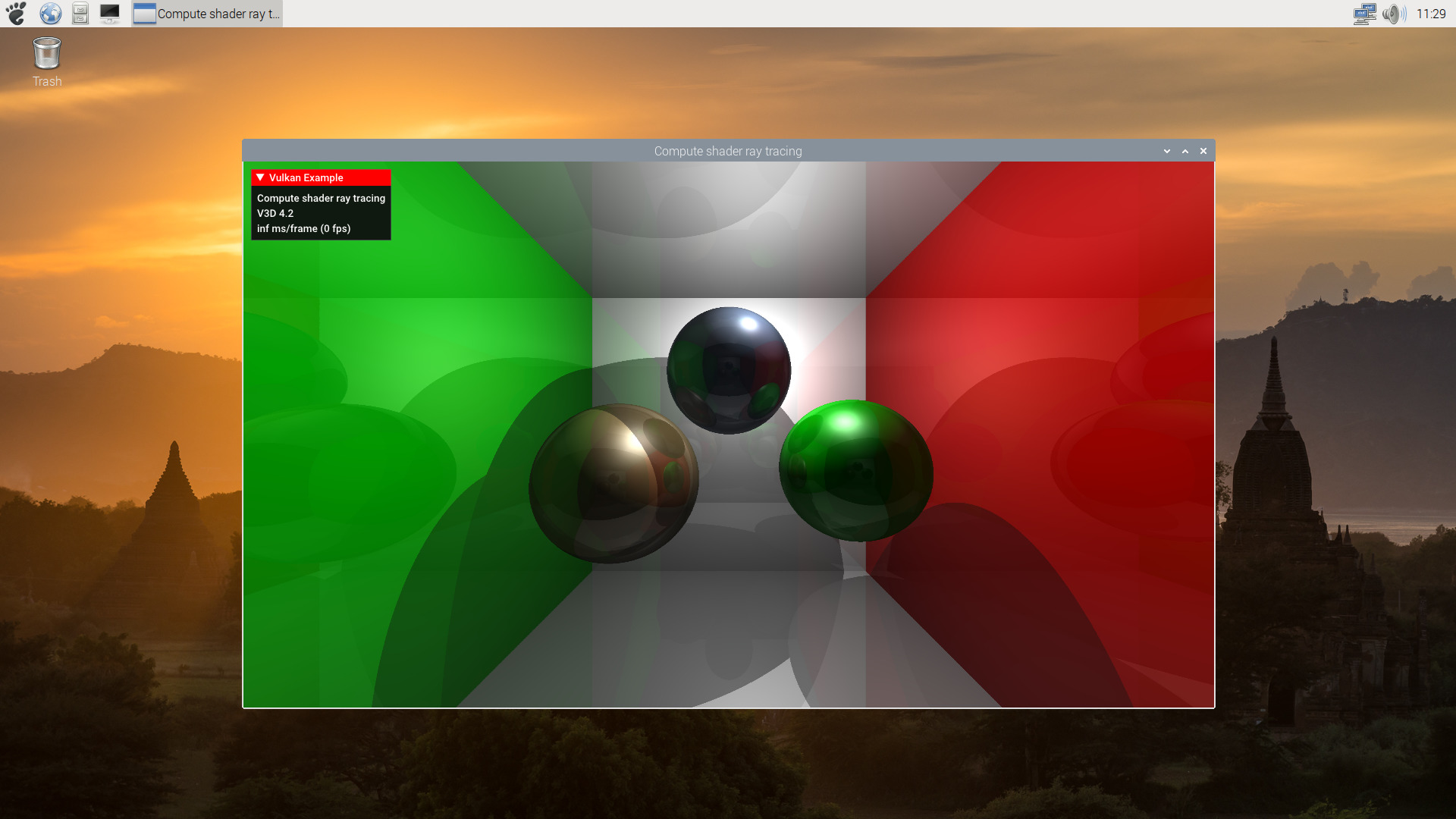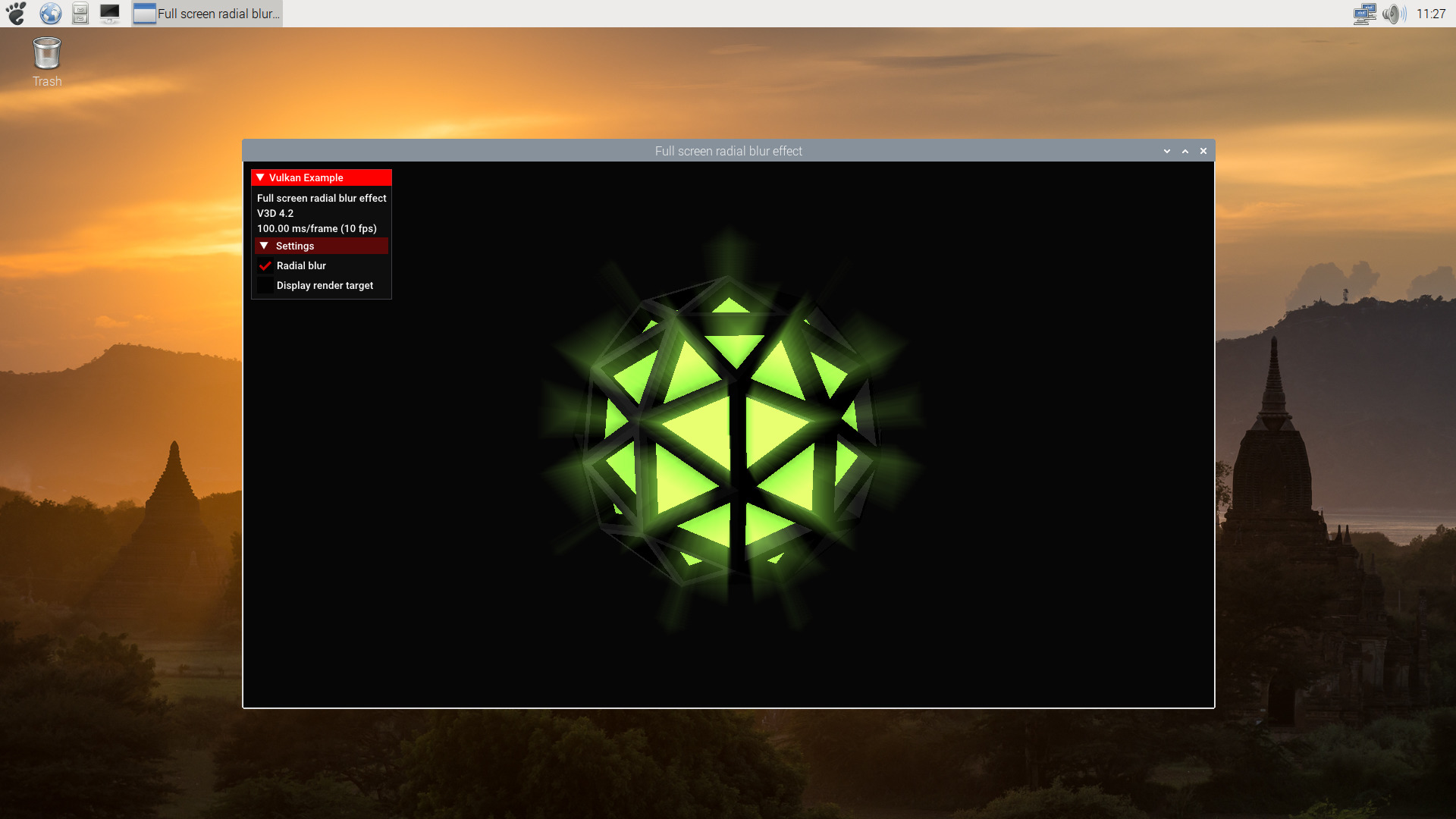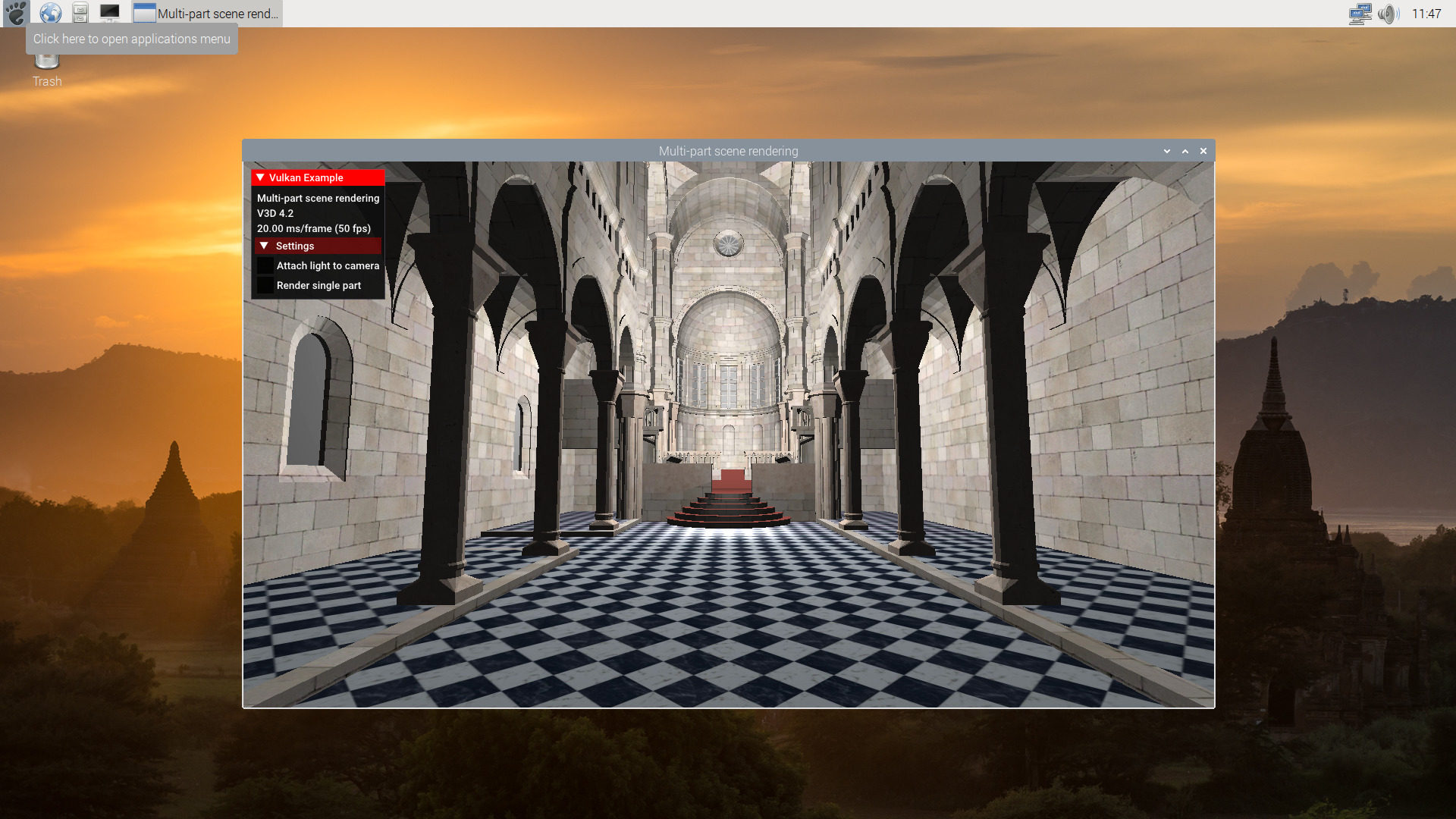And something more visible thanks to that: now the Intel Mesa driver exposes OpenGL 4.6 support, the most recent version of OpenGL.
As perhaps you could recall, the i965 Intel driver became 4.6 conformant last year. You have more details about that, and what being conformant means in this Iago blog post. On that blog post Iago mentioned that it was passing with an early version of the ARB_gl_spirv support, that we were improving and interating during this time so it could be included on Mesa master. At the same time, the CTS tests were only testing the specifics of the extensions, and we wanted a more detailed testing, so we also were adding more tests on the piglit test suite, written manually for ARB_gl_spirv or translated from existing GLSL tests.
Why did it take so long?
Perhaps some would wonder why it took so much time. There were several reasons, but the main one, was related to the need to add a lot of code related to linking on NIR. On a previous blog post ( Introducing Mesa intermediate representations on Intel drivers with a practical example) I mentioned that there were several intermediate languages on Mesa.
So, for the case of the Intel driver, for GLSL, we had a chain like this:
GLSL -> AST -> Mesa IR -> NIR -> Intel backend IR
Now ARB_gl_spirv introduces the possibility to use SPIR-V instead of GLSL. Thanks to the Vulkan support on Mesa, there is a SPIR-V to NIR pass, so the chain for that case would be something like this:
SPIR-V -> NIR -> Intel backend IR
So, at first sight, this seems like it should be more simple, as there is one intermediate step less. But there is a problem. On Vulkan there is no need of a really complex shader linking. Basically gathering some info from the NIR shader. But OpenGL requires more. Even though the extension doesn’t required error validation, the spec points that queries and other introspection utilities should work naturally, as long as they don’t require names (names are considered debug info on SPIR-V). So for example, on Vulkan you can’t ask the shader about how big an SSBO is in order to allocate the space needed for it. It is assumed that you know that. But in OpenGL you can, and as you could do that using just the SSBO binding, ARB_gl_spirv requires that you still support that.
And here resided the main issue. On Mesa most of the linking is done at the Mesa IR level, with some help when doing the AST to Mesa IR pass. So the new intermediate language chain lacked it.
The first approach was trying to convert just the needed NIR stuff back to Mesa IR and then call the Mesa IR linker, but that was working only on some limited cases. Additionally, for this extension the linker rules change significantly. As mentioned, on SPIR-V names are optional. So everything needs to work without names. In fact, the current support just ignores names, for simplicity, and to ensure that everything works without it. So we ended up writing a new linker, based on NIR, and based on ARB_gl_spirv needs.
The other main reason for the delay was the significant changes on the SPIR-V to NIR pass, and NIR in general, to support SSBO/UBO (derefs were added), and also the native support of transform feedback, as Vulkan added a new extension, that we wanted to use. Here I would like to thank Jason Ekstrand for his support and patience ensuring that all those changes were compatible with our ARB_gl_spirv work.
So how about removing Mesa IR linking?
So, now that it is done, perhaps some people would wonder if this work could be used to remove Mesa IR on the GLSL intermediate language chain. Specially taking into account that there were already some NIR based linking utilities. My opinion is that no 😉
There are several reasons. The main one is that as mentioned ARB_gl_spirv linking rules are different, specifically on the lack of names. GLSL rules are heavily based on names. During the review it was suggested that need could be abstracted somehow, and reuse code. But, that doesn’t solve the issue that current Mesa IR supports the linkage of several different versions of GLSL, and more important, the validation and error checking done there, that is needed for GLSL, but not for ARB_gl_spirv (so it is not done). And that is a really big amount of work needed. In my opinion, redoing that work on NIR would not bring a significant advantage. So the current NIR linker would be just the implementation of a linker focused on the ARB_gl_spirv new rules, and would just share utility NIR based linking methods, or specific subfeatures, as far as possible (like the mentioned transform feedback support).
Final words
If you are interested on more details about the work done to implement ARB_gl_spirv/ARB_spirv_extensions support, you can check the presentation I gave on FOSDEM 2018 (slides, video) and the update I gave the same year on XDC (slides, video).
And finally I would like to thank all the people involved. First, thanks to Nicolai Hähnle for starting the work, that we used as basis.
The Igalia team that worked on it at some point were: Eduardo Lima, Alejandro Piñeiro, Antía Puentes, Neil Roberts, some help from Iago Toral and Samuel Iglesias at the beginning and finally thanks to Arcady Goldmints-Orlov, that dealt with handling the review feedback for the two ~80 patches MR (Mesa and Piglit test suite MR) that I created, when I became needed elsewhere.
And thanks a lot to the all the the reviewers, specially Timothy Arceri, Jason Ekstrand and Caio Marcelo.
Finally, big thanks to Intel for sponsoring our work on Mesa, Piglit, and CTS, and also to Igalia, for having me working on this wonderful project.
